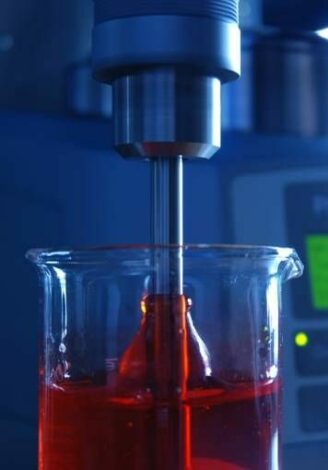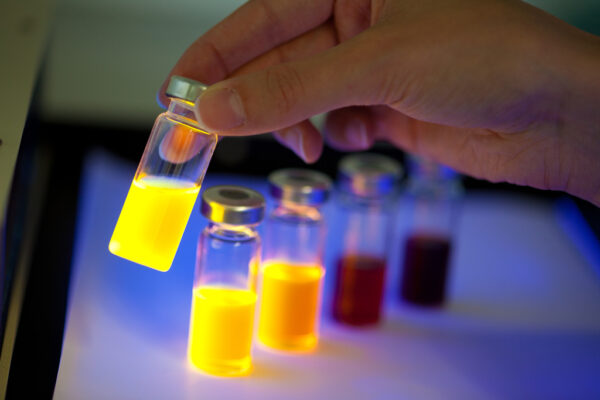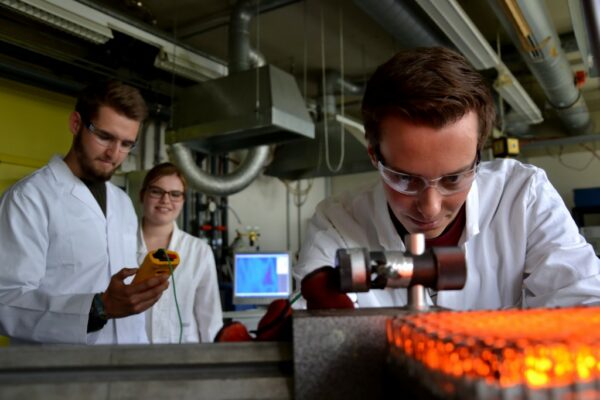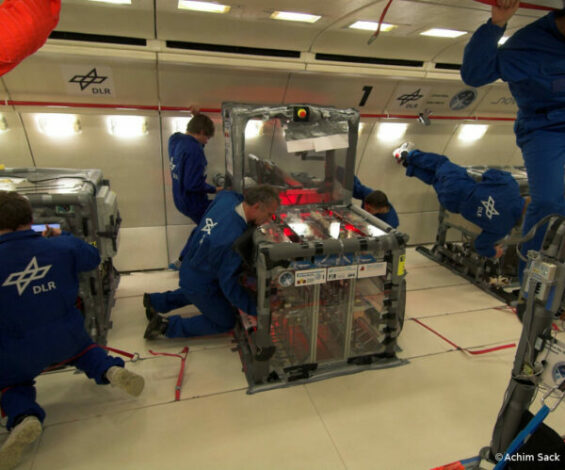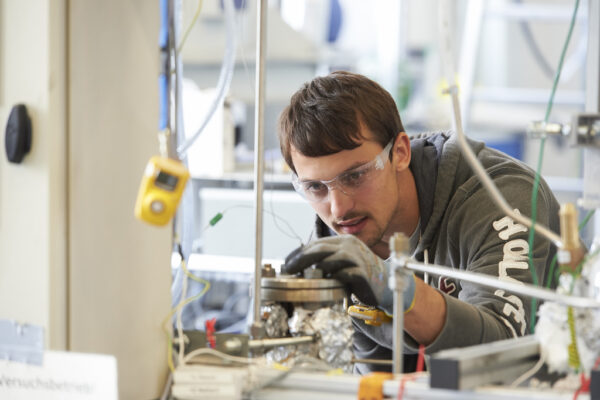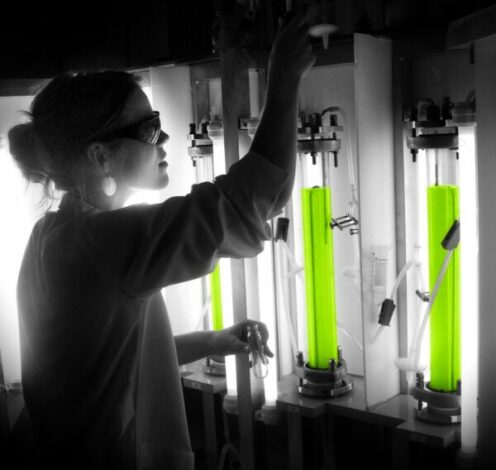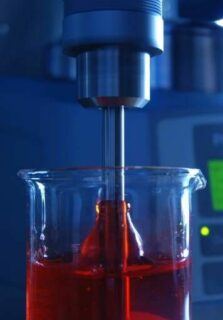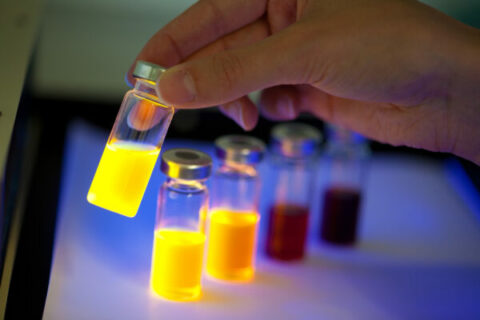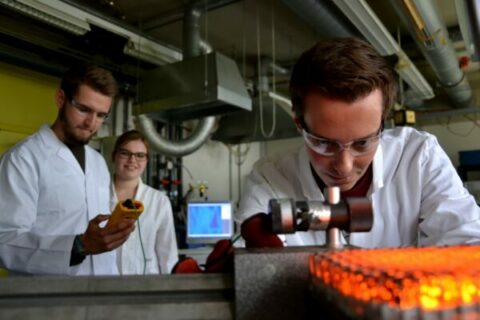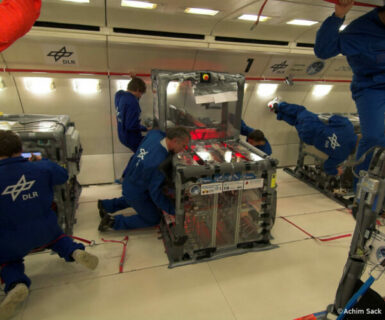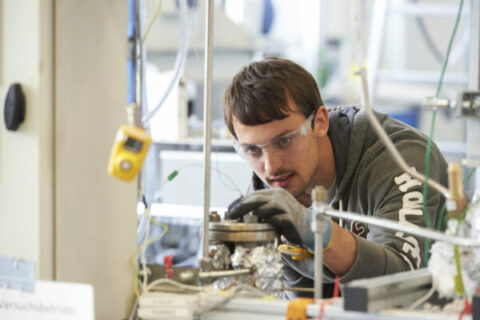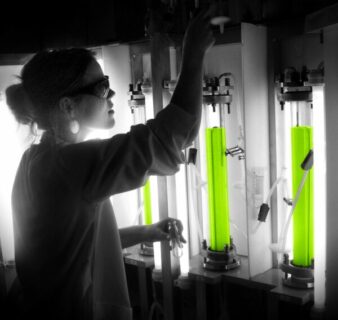ProfiS – Professors in schools
ProfiS – Professors in schools
With the ProfiS program, scientists from the Department of Chemical and Biological Engineering (CBI) of the Faculty of Engineering at Friedrich-Alexander-Universität Erlangen-Nürnberg offer 30-minute interactive lectures on topics from their current research.
The Department CBI is very keen to present scientific and technical topics to pupils in an exciting and future-oriented way and to show how valuable these topics are for our everyday lives.
All lectures are prepared in such a way that they correspond to the lessons and the level of knowledge of pupils from year 8 upwards. The lecture topics are particularly suitable for chemistry, biology and physics lessons as well as for science and technology lessons. The lectures can either take place on site at the school or online. The programme is free of charge for schools. To take out an appointment, please contact the CBI Department Office.
You can download the current brochure here:
Current program:
Where colours come from

Our world is dominated by colours! In this lecture, we will get to the bottom of colours and discuss how colours can be optimally designed.
Although colours constantly accompany, inspire or warn us, it is not so easy to say where colours actually come from. The physical and chemical mechanisms that cause, enhance or change colours are as diverse as the colours themselves. In this lecture, we shed light on the darkness and gain a fundamental understanding of where colours come from. We will learn how the white of the snow, the blue of the sky or the iridescent colours of the peacock are caused and learn to what extent chemistry and physics dominate the effects of our everyday lives. Based on this fundamental understanding, we will discuss how colours can be optimally designed – a topic that is being fundamentally investigated by an interdisciplinary team of scientists at FAU as part of the Collaborative Research Centre 1411.
Concept/lecture: Prof. Dr rer. nat. Nicolas Vogel (Chair of Particle Engineering)
CO2 - from climate killer to valuable raw material
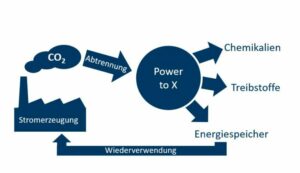
In the future we will not be able to do without carbon-based molecules. Can’t we use CO2 for this?
A new pioneering spirit has flared up in research: How can the current value creation system be made more sustainable? The focus here is on closing material cycles, just as nature shows us. What nature is particularly good at is recovering CO2 in the form of biomass. Can’t that be done faster? You might think that the technology is still in its infancy, but as early as 1903 the French chemist Paul Sabatier realised that valuable energy sources could be recovered from the reaction of CO2 with H2 on catalysts. Today, this technology is more important than ever before. With the help of so-called Power-to-X technologies, new chemicals can be obtained from industrial waste gases. At the same time, surplus electricity from renewable energies is stored so that it can be made available at times of high energy demand. Pupils learn about the options already available for utilising CO2 and what stage they are at. Their advantages and disadvantages are discussed and the existing hurdles are considered. The pupils learn about the potential for a sustainable future of the various CO2 utilisation options and where the journey can still take us ….
Concept/lecture: Prof. Dr. Tanja Franken (Junior Professorship for Catalytic and Electrocatalytic Systems and Processes)
Mobility of the future - fuel cell
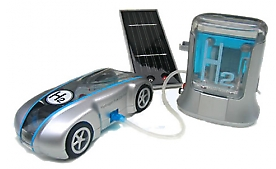
The topic of “Electrochemical energy conversion for electromobility” will be introduced to pupils with a few simple and illustrative examples.
After a general introduction to the current state of mobility in our society, the focus will be on current discussions in the context of the energy transition. In particular, the focus will be on how we can organise mobility in terms of energy technology in the future. Concepts of batteries and fuel cells will be presented and their respective advantages and disadvantages objectively analysed. An open exchange of knowledge with the students will also take place in order to be able to correctly classify the often coloured information conveyed by the media. The core part of the exchange also includes an in-depth look at the structure of fuel cells, their components and how they work. This will be explained to the pupils using pictures and examples. In particular, a teaching kit with a fuel cell toy car, coupled to a solar fuelling station with water electrolysis, is also available for this purpose.
Concept/lecture: Prof. Dr. Karl J. J. Mayrhofer & Prof. Dr. Simon Thiele (Helmholtz Institute Erlangen-Nürnberg for Renewable Energy (HI ERN))
Biotechnology, the environment and all the rest
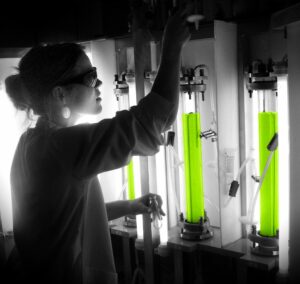
A large number of biotechnological products and processes are used today. Several examples will be used to illustrate the actual dangers of gene transfer between “extraneous species” in nature and why we can relax here. Whether the number of germs resistant to antibiotics is actually increasing, where they originate from, how we can get rid of them and why doctors’ prescribing practices have very little to do with it.
The lecture will be rounded off with a brief look at the contribution of biotechnology to the supply of raw materials for the chemical industry and why – from the speaker’s point of view – there is “good and bad” biogas.
The lecture explains the basic principles of nature. In addition, the students will be shown that a simple technology assessment is possible without specialised knowledge and that they can form a qualified opinion without having studied the subject.
Concept/lecture: Dr Holger Hübner (Chair of Bioprocess Engineering)
On a slide with the pitcher plant
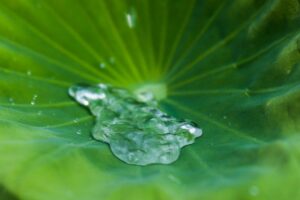
Dirty surfaces are a nuisance in everyday life and can dangerously restrict the function of materials. Electricity pylons collapse under the weight of ice, dirty solar cells no longer supply electricity and bacteria that adhere to surfaces in hospitals can be dangerous.
The fascinating properties of animals and plants have been optimised by nature to improve the chances of survival of the species and inspire us with extremely efficient functionality that is far superior to technological materials in many respects. Crustaceans and mussels have extremely hard shells that protect them from predators; butterflies, birds and beetles are characterised by intense colours that can be used as a warning or luring signal; and the lotus plant cleans itself with its water-repellent surface. In the lecture and in discussion with the pupils, we explain how the self-cleaning properties of plants work. We introduce the lotus plant and the pitcher plant, both of which use special tricks to keep their surfaces very clean. We take a close look at these surfaces and see that a special surface structure leads to the remarkable water-repellent properties. Based on these findings, we will jointly develop approaches for producing surfaces with similar properties in the laboratory.
Concept/lecture: Prof. Dr rer. nat. Nicolas Vogel (Chair of Particle Technology)
With laser light to the material data
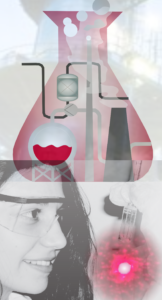
In a simple and clear way, students gain an insight into the determination of material data in energy and process engineering using conventional and laser-optical methods.
The design of equipment and processes in energy and process engineering requires precise knowledge of material properties and material data. This makes it possible to avoid incorrect dimensioning when planning systems and to save energy and costs.
Various theoretical and experimental methods are used at the Chair of Advanced Optical Technologies – Thermophysical Properties (AOT-TP) to obtain precise material data. In addition to molecular dynamics (MD) simulation, modern, including specially developed, high-precision measurement methods are available. For example, dynamic light scattering (DLS), a laser-optical measurement method, can be used to determine a variety of material data of fluids with high accuracy and, in some cases, simultaneously. These include viscosity, diffusion coefficient, surface tension, thermal diffusivity and sound velosity.
In this lecture, the importance of material data will first be explained using current examples from energy and process engineering. This will be followed by an overview of theoretical and experimental methods for determining material data and, in particular, transport properties. From this group, the determination of the viscosity of water-alcohol mixtures using a capillary viscometer and the DLS will be demonstrated in a practical part on site at the school. The question “Why does whisky oil the throat better than water or pure alcohol?” will also be scientifically analysed.
Concept/lecture: Prof. Dr.-Ing. Andreas P. Fröba & Dr.-Ing. Thomas M. Koller (Chair of Advanced Optical Technologies – Thermophysical Properties)
Energy source of the future - hydrogen technologies from Erlangen
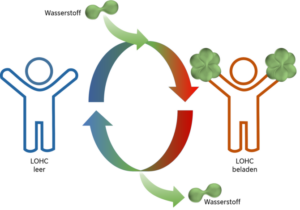 How will we meet our growing demand for energy in the future? What sustainable technologies are available to us to store fluctuating “green” energies such as sunlight and wind power? How can we save the summer for the winter? How can we bring the autumn storm safely into the power grid?
How will we meet our growing demand for energy in the future? What sustainable technologies are available to us to store fluctuating “green” energies such as sunlight and wind power? How can we save the summer for the winter? How can we bring the autumn storm safely into the power grid?
In order to counteract climate change, a global change in the use of fossil fuels for energy production is unavoidable. Almost 90% of the crude oil produced worldwide is used to generate energy, which means it ends up as CO2 in various combustion processes. Due to its high energy density, hydrogen would be an ideal substitute for such processes, as only water is produced during combustion. The technologies for generating energy from hydrogen are also established; the fuel cell has already flown to the moon with the Apollo astronauts. Unfortunately, as the lightest element in the universe, hydrogen is very volatile and therefore not easy to store and transport. However, simple chemical reactions can be used to bind the hydrogen to so-called carrier molecules and release it from these again. These two reactions are called hydrogenation and dehydrogenation and work particularly well if you have special catalysers that make the reactions significantly faster. In Erlangen, we are researching such carrier materials, which in the best case are liquid, so that we can easily use them in our current infrastructure (tankers, pipelines, petrol stations). But the catalysts are also being developed and improved at FAU and its partner institutions (Helmholtz, Fraunhofer, EnCN). And ultimately, the reactions must run safely and efficiently in chemical reactors.
To this end, the company Hydrogenious LOHC was founded in 2013 and now sells such reactors all over the world.
The presentation will explain the individual hydrogen storage technologies. LOHC storage will be demonstrated with short clips. A selection of catalysts and LOHC storage liquids can be shown on request. Advantages and disadvantages of hydrogen technologies are discussed and possible hurdles on the way to a climate-neutral energy transition are discussed together with the pupils.
Concept/lecture: Prof. Dr. Marco Haumann (Chair of Chemical Reaction Engineering)
